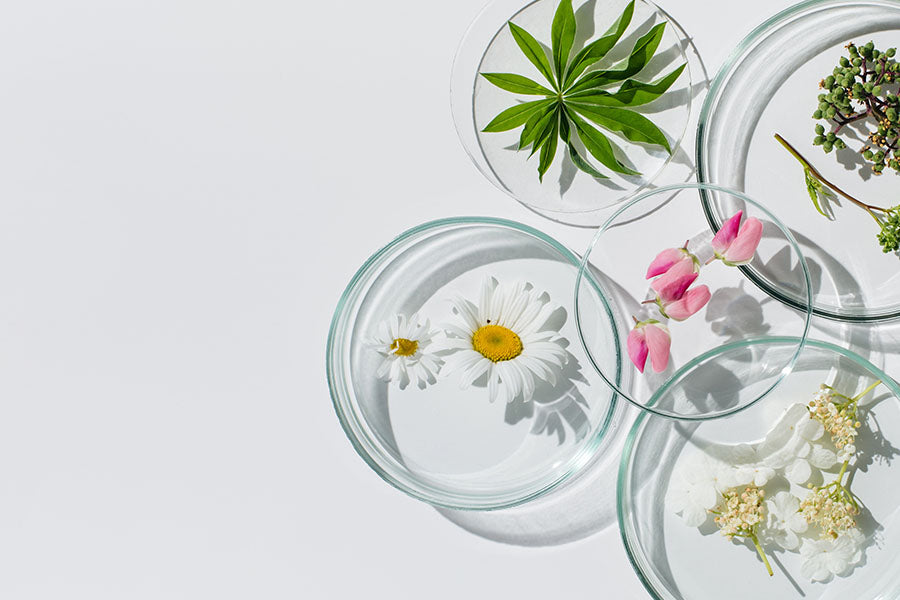Skincare for Fall

As the seasons change, so do your skin’s needs. After the hot and humid summer months, your skin faces new challenges in the fall, such as cooler temperatures, drier air, and fluctuating humidity. These environmental changes can affect how your skin looks and feels, making it essential to adjust your skincare routine to maintain healthy, radiant skin throughout the season.
Here’s how you can adapt your skincare routine for fall, addressing common skin concerns that arise with the shift in weather.
Why You Should Change Your Skincare Routine for Fall
During the summer, your skin produces more oil due to higher temperatures and humidity. In contrast, the cooler, drier fall air can lead to dehydration, flakiness, and a lack of glow. Transitioning your skincare routine helps prevent these issues and gives your skin the care it needs during seasonal changes.
How to Transition Your Skincare Routine for Fall
1. Switch to a Hydrating Cleanser
In the summer, you may have relied on lightweight, gel-based cleansers to remove sweat and excess oil. Swap those out as the air gets cooler for more hydrating, cream-based cleansers that won’t strip your skin of its natural oils.
Look for cleansers with soothing ingredients like glycerin or aloe vera that hydrate while effectively cleansing your skin. This will help prevent the dryness that can occur as the humidity drops.
2. Introduce a Richer Moisturizer
Upgrading your moisturizer is one of the most important changes to make in your fall skincare routine. As the air becomes drier, your skin loses moisture more quickly, so a heavier moisturizer will help lock in hydration and protect your skin’s barrier.
Look for moisturizers with nourishing ingredients like ceramides, hyaluronic acid, and shea butter. These ingredients restore moisture and keep your skin soft and plump, even on the chilliest days.
3. Incorporate a Hydrating Serum
Fall is the perfect time to introduce a hydrating serum into your routine, especially if you’ve been using mattifying products during the summer. A serum rich in hyaluronic acid or glycerin can help your skin retain moisture, keeping it hydrated and smooth.
Apply the serum after cleansing and toning but before moisturizing to give your skin an extra boost of hydration.
4. Exfoliate, But Don’t Overdo It
Exfoliation is key to removing dead skin cells and maintaining a healthy glow, especially as the cooler weather can make your skin appear dull. However, over-exfoliating can damage your skin’s barrier, leading to dryness and irritation.
Switch to a gentler exfoliant in the fall, and limit exfoliation to 1-2 times a week. Consider using chemical exfoliants like AHAs or BHAs, which are less abrasive than physical scrubs but still highly effective at promoting skin renewal.
5. Add a Facial Oil
Facial oils can be a game-changer during the fall. Adding an oil to your routine can help lock in moisture and create a protective barrier against harsh environmental conditions. Oils rich in fatty acids, like jojoba or rosehip oil, are excellent for soothing dry or irritated skin.
Apply a few drops after moisturizing for an extra layer of protection, or mix it into your moisturizer for a richer texture.
6. Continue Using Sunscreen
Even though the sun may not feel as intense as it did during the summer, UV rays are still present and can cause skin damage year-round. It’s important to continue using a broad-spectrum sunscreen with at least SPF 30 every day, even during the cooler months.
Fall sunlight can still contribute to premature aging, hyperpigmentation, and other skin concerns, so don’t skip this crucial step.
Common Fall Skincare Issues and How to Solve Them
As the weather cools down, some common skin concerns tend to arise. Here’s how to address these issues:
1. Dry, Flaky Skin
Cooler temperatures and drier air can lead to flaky, dehydrated skin. To combat this, focus on increasing hydration in your routine. Use a rich moisturizer, incorporate a hydrating serum, and avoid hot showers, which can strip your skin of its natural oils.
2. Dull Complexion
The transition from warm to cold weather can leave your skin looking dull and tired. Regular, gentle exfoliation can help remove dead skin cells and reveal a brighter complexion. Adding a vitamin C serum to your routine can also help brighten and even out skin tone.
3. Increased Sensitivity
Cold winds and dry air can make your skin more sensitive. Look for products with calming ingredients like chamomile, aloe, or oat extract to soothe and reduce irritation. Also, avoid harsh ingredients that can exacerbate sensitivity, such as alcohol or synthetic fragrances.
4. Breakouts
As the weather changes, your skin may experience breakouts due to the fluctuating humidity. Stick to a balanced routine with gentle exfoliation and non-comedogenic products to avoid clogging your pores. Use a lightweight moisturizer if your skin is prone to breakouts, but don’t skip hydration, as dryness can also lead to increased oil production.
As fall approaches, listening to your skin and adapting your routine is important. By making minor adjustments—such as switching to more hydrating products, incorporating facial oils, and continuing sun protection—you’ll keep your skin healthy, radiant, and glowing all season long. Remember, consistency is key to keeping your skin in its best condition as you transition from the warmth of summer to the crisp, cool days of fall.





